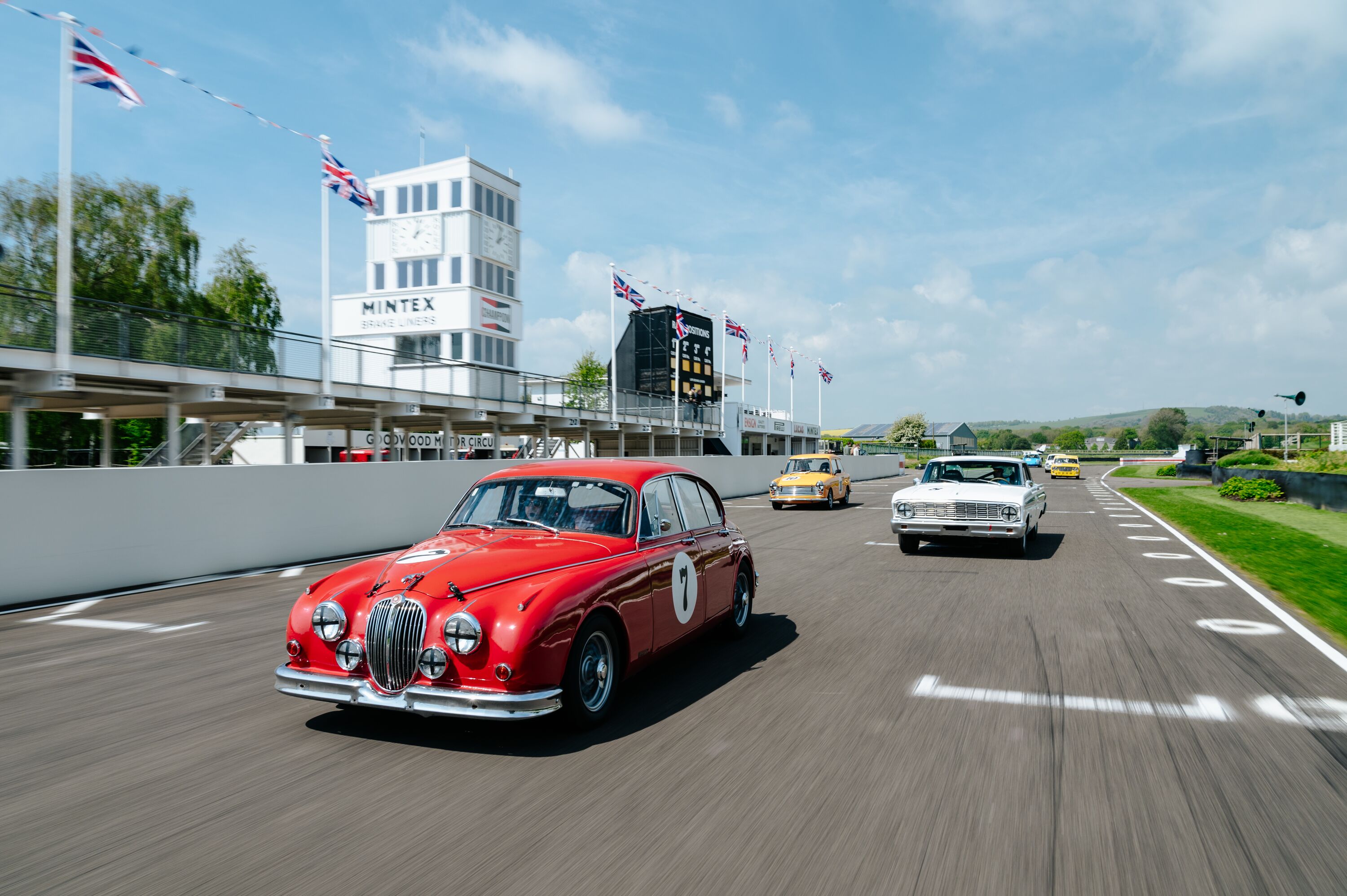The best Mazda MX-5s ranked
'The answer is always Miata' has become deeply engraved in automotive folklore for a reason – if you want to take your first step on the performance car ladder, sample rear-wheel drive and the joys of open top motoring, the Mazda MX-5 (badged Miata in the USA) is the most affordable way to do it. For more than 35 years, this unassuming little roadster has carried the sportscar torch higher and longer than almost anyone else. Here are ten of our favourite examples – and why each deserves its place in the MX-5 hall of fame.

10. 2005 Mazda MX-5 Mk3
The Mazda MX-5 Mk3 is the black sheep of the MX-5 family. Heavier, taller, and less communicative than its predecessors, it never quite captured the “wear it like a glove” feel of the Mk1 and Mk2. Much of that was due to the high seating position, which meant you never felt entirely at one with the car. However, all the controls – even the gear shift – lacked the extra granules of communication that made its forebears so special. Mazda admitted as much because the Mk3 got the most comprehensive facelift given to an MX-5.
But you should not discount the Mk3 out of hand – it's still a rear-wheel drive convertible sportscar that you can buy for the same price as a hatchback. Roomier than any MX-5 before it, the Mk3 makes a cracking budget-friendly daily with a big dose of fun baked in.

9. 1999 Mazda MX-5 Mk2 10th Anniversary
The Mk2 MX-5 suffered a similar fate to the Mk3 – another car seen as a poor relation to the model it replaced. In fact, the Mk2 was very similar mechanically to the Mk1, sharing its compact dimensions, precise steering, and wonderful gearshift. It felt like a classic car built to modern production standards. In the Mk2's case, looks were the problem because it lost the pert rear end and pop-up headlights that made the Mk1 a junior exotic.
Find a 10th Anniversary model, though, and we're sure you can overlook these aesthetic failings. Mazda threw everything it had at the Anniversary, equipping it with Bilstein dampers, a closely stacked six-speed gearbox, and a limited-slip differential, making it one of the sweetest versions of the company's lovable roadster. Mazda then finished the revamp with unique chrome alloy wheels and Innocent Blue Mica paintwork. Just 600 examples sold in the UK, and not many of those will have survived the iron worm MX-5s are famous for.

8. 2009 Mazda MX-5 Mk3.5
Even Mazda knew it got the Mk3 MX-5 wrong, you can tell by how much changed with the Mk3.5 facelift. The looks were the first area to undergo a thorough overhaul, with a new grille and lights making the car look fresher and sharper than the original Mk3.
Next up was the driving experience. First on the chopping block was the car's suspension. The Mk3 rode over the road like it was on stilts with huge ugly gaps in its wheel arches. The solution was to lower it by 2.5cm, making the car look as it should have in the first place. The new stance also did wonders for the handling. The new 2.0-litre engine was tuned with a similar remit; it revved more freely and had a higher redline. Finally, the Mk3 was the car it was always meant to be.

7. 2015 Mazda MX-5 Mk4 1.5-litre
The Mk4 MX-5 was Mazda back at its best. Lighter and smaller than the Mk3, it was also beautiful to look at, with a body that managed to appear both modern and classical. Much the same was true of the inside, too. A simple steering wheel, tall transmission tunnel and a stubby manual gearbox hinted at the purity of the driving experience, but you also got the latest tech, including Apple CarPlay and sat-nav baked into the infotainment.
While it would be tempting to opt for the 2.0-litre models, the 1.5-litre is the one to choose in early cars. Cash-strapped Mazda couldn't afford to spend a fortune developing two engines, so instead, it poured all its finances into the 1.5 to build a free-revving delight with sharp responses and a cheeky soundtrack.

6. 2014 Mazda MX-5 Mk3.5 25th Anniversary
Mazda celebrated 25 years of the MX-5 by throwing everything but the kitchen sink at the Mk3.5 generation of the car. The 25th Anniversary model was finished in the company's iconic Soul Red Metallic paint, featuring contrasting dark gunmetal alloy wheels, black mirrors, and black A-pillars, as well as a rear diffuser, chrome tailpipes, and '25th Anniversary' badging. Inside, there were unique sill guards and stone-leather upholstery with contrasting red stitching and '25th Anniversary' logos embossed into the headrests. Bluetooth, sat-nav, and the fact that the car only came with Mazda's folding hard-top roof made this one of the most livable versions of the MX-5 Mazda has ever produced.
But Mazda's delectable little roadster has never been about executive equipment level – having fun has always been its primary concern. To that end, the car’s 2.0-litre engine was hooked up to a short-ratio six-speed manual gearbox and an LSD – and it rolled on Bilstein shock absorbers. Sharp looking and great to drive the 25th Anniversary is well worth keeping an eye out for if you're in the market for a usable sportscar, although the model's rarity – just 750 came to the UK – means you will pay a premium.

5. 2003 Mazda MX-5 Coupe
While everyone knows Mazda builds the Roadster Coupe – an MX-5 with a folding hard-top roof, few realise it also produced a tin-top version of the Mk2 for the Japanese market. While the Mk2 Roadster forever lived in the shadow of the Mk1, the Coupe carved its own niche with its jelly-mould styling mirroring the DNA of the Mazda RX-7 but with a neat rear end that gave it the feel of a modern MGB GT.
And, we suspect, it also handled better than the convertible. All but the most expensive, carbon-tubbed open-tops suffer from scuttle and shake, and the MX-5 suffers more than most. The roof should have done wonders for this, while also enhancing the steering and allowing Mazda to fit stiffer springs. Yes, the MX-5 Coupe could have been quite a thing if you were one of the lucky people (Mazda only made 1,000) to get your hands on one.

4. 1990 Mazda MX-5 NA
The Mk1 MX-5 shocked the world when it was launched in 1989 – a lightweight, two-seater sportscar built at a time when everyone was buying hot hatches. The MX-5 came from a different world, one where delicate rear-wheel handling balance took precedence over lairy but fast front-wheel-drives.
Mazda famously based its MX-5 on the original Lotus Elan, a car renowned for its ability to engage the driver. However, the MX-5 differed significantly in two key areas. To begin with, it offered turnkey reliability that was alien to owners of British sportscars like the Elan and MGB. Its delightful, simplistic roof was the second prong on its two-stage attack on the car market. Unlike a Lotus, which required a degree in architecture to erect its fabric top, in the Mazda you could haul up the roof from the comfort of your driver's seat. While Mazda can thank Lotus for its sportscar DNA, everyone else has to thank Mazda for rekindling our love for simple performance cars – a success story that is still on sale today.

3. 2019 Mazda MX-5 Mk4 30th Anniversary
Having read our snippets on the 10th and 25th Anniversary models, you'll have a good idea of what to expect from the 30th Anniversary – it’s an MX-5 with all the options ticked. The best part of the 30th Anniversary – its 2.0-litre engine – wasn't actually unique to the special edition.
Before the introduction of the new 2.0-litre, Mazda had always lavished the most love on its entry-level engines, giving them a fizz and fervour that perfectly matched the rest of the car. However, that changed in 2018 with the introduction of the 181PS (133kW) 2.0-litre engine. Lightened pistons and conrods upped the 2.0-litre's rev limit from an admirable 6,800rpm to a heady 7,500rpm, and a reworked intake and manifold meant it sounded better too. However, the best part was the power increase, up 21PS (15kW) compared to the old unit. Sounds insignificant, but in a car weighing less than 1,100kg, it was enough to turn the MX-5 from brisk to fast for the first time in its history.
The Anniversary model added Bilstein shocks, an LSD and a strut brace, but it also got four-pot Brembo callipers at the front and Nissin callipers at the rear, housed behind a set of Rays 17-inch alloy wheels. If you're after the 'drivers' MX-5, this is the one to have, and the fact that it came stuffed full of equipment and finished in eye-searing Racing Orange paint merely sweetened the deal. Worldwide, only 3,000 sold.

2. 2004 Mazdaspeed MX-5
You don't need to buy a 30th Anniversary model to get an MX-5 with decent power, though. The aftermarket is awash with options from supercharger kits to turbochargers and independent throttle bodies – there are a million-and-one ways to get more power from your MX-5.
However, you didn't always have to turn to the aftermarket for blown performance. It's a little-known fact that Mazda turbocharged the MX-5 from the factory. It was called the Mazdaspeed MX-5, and it boasted 178PS (133 kW) courtesy of a HI RHF5 VJ35 turbocharger. Mazda did the job in a way only an OEM could, strengthening the internals of the 1.8-litre motor and fitting an uprated gearbox and limited-slip differential that had the measure of its newfound power. Bigger brakes, Bilstein shocks, and stronger anti-roll bars completed the job.
Aesthetically, the Mazdaspeed is easily spotted by its deep front air dam. These rare models – fewer than 7,000 were built more than 20 years ago, fewer than planned due to a fire at the Horishima factory caused by the 2004 tsunami – command a considerable premium, which is hard to stomach given that the tune is actually conservative compared to the power the aftermarket can release.

1. 1994 Mazda MX-5 RS Limited
If the original MX-5 is the best model ever built – many enthusiasts will attest to this being the case – the RS Limited is the MX-5 at its best. Based on the 1.8-litre Mk1, the RS Limited featured thicker anti-roll bars, a yellow strut brace, BBS alloy wheels, and a gearbox with a shorter drive ratio designed to extract the most from every one of the car's 140 horses. It was finished in Montego Blue Mica paint, which shifted from a deep green to blue depending on the angle of the light. However, the best aspect of the RS Limited was found on the inside, where a pair of lightweight, Kevlar-backed sports seats was featured, lending this affordable and straightforward sports car a more exotic air.
There is a downside, though. The RS' limited' was indeed very limited, with just 500 examples built, and all of them going to the Japanese market. You can imagine the ravages of time have depleted that original number significantly. The result? You’ll pay north of £10,000 for an immaculate example.
road
news
ranked
list
mazda
MX-5







